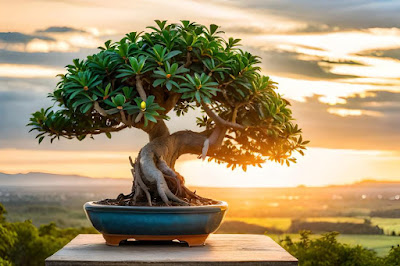Ficus Bonsai trees are a popular choice among bonsai enthusiasts. They are easy to care for and are suitable for both indoor and outdoor settings. In this guide, we will cover everything you need to know about growing and caring for Ficus Bonsai Trees.
Table Of Contents (toc)
Introduction
Ficus trees are native to tropical and subtropical regions and are part of the fig family. They can grow up to 100 feet tall in their natural environment, but as bonsai trees, they can be maintained at a more manageable size. Ficus Bonsai Trees are ideal for beginners because they are relatively easy to care for and forgiving of minor mistakes.
Ficus Bonsai Tree Basics
To begin with, you need to select the right Ficus tree species for your bonsai. The most commonly used species for bonsai are Ficus Microcarpa and Ficus Retusa. They are both tropical trees that can be grown indoors or outdoors. Once you have selected your tree, you need to consider the type of soil, light, and temperature requirements for the species you have chosen.
Watering and Fertilizing
Ficus Bonsai Trees require frequent watering, especially during the growing season. It is essential to keep the soil moist, but not overly wet. Overwatering can lead to root rot and other issues. You should also fertilize your Ficus Bonsai Tree during the growing season to promote healthy growth. Be careful not to over-fertilize, as this can also cause problems.
Pruning and Training
Pruning is an essential aspect of Ficus Bonsai Tree care. It helps to maintain the shape and size of the tree, promote branching, and remove dead or diseased branches. Regular pruning also helps to encourage new growth. Training your Ficus Bonsai Tree involves wiring the branches into the desired shape. It requires patience and careful attention to detail, but it is a rewarding process.
Common Pests and Diseases
Ficus Bonsai Trees are susceptible to several pests and diseases. The most common pests are spider mites, mealybugs, and scale insects. These pests can be controlled with insecticidal soap or neem oil. The most common diseases are fungal infections, such as root rot and leaf spot. These diseases can be prevented by keeping the soil well-drained and ensuring good air circulation around the tree.
Troubleshooting
If you notice any problems with your Ficus Bonsai Tree, such as yellowing leaves, leaf drop, or wilting, it is essential to identify the cause and take appropriate action. Yellowing leaves may indicate overwatering or a lack of nutrients. Leaf drop may be caused by sudden changes in temperature or light. Wilting may indicate underwatering or root rot.
FAQs
Can Ficus Bonsai Trees be grown indoors?
Yes, Ficus Bonsai Trees can be grown indoors as long as they receive enough light and proper care.
How often should I water my Ficus Bonsai Tree?
Ficus Bonsai Trees should be watered frequently, but not overly wet. It is best to check the soil regularly and water when the top inch of soil feels dry.
Can I prune my Ficus Bonsai Tree during the winter?
It is best to avoid pruning your Ficus Bonsai Tree during the winter, as this is a time of slower growth. Pruning is best done during the growing season.
Conclusion
In conclusion, Ficus Bonsai Trees are a wonderful addition to any indoor or outdoor space. With their beautiful foliage and intricate root systems, these trees are sure to impress anyone who sees them. However, they do require proper care and attention in order to thrive.
By following the tips and recommendations outlined in this article, you can ensure that your Ficus Bonsai Tree remains healthy and beautiful for years to come. Remember to provide adequate lighting, water and fertilize appropriately, prune and train regularly, and watch out for common pests and diseases.
With patience and dedication, growing a Ficus Bonsai Tree can be a rewarding experience. Take the time to learn about your tree and its unique needs, and enjoy the beauty and tranquility it brings to your home or garden.





